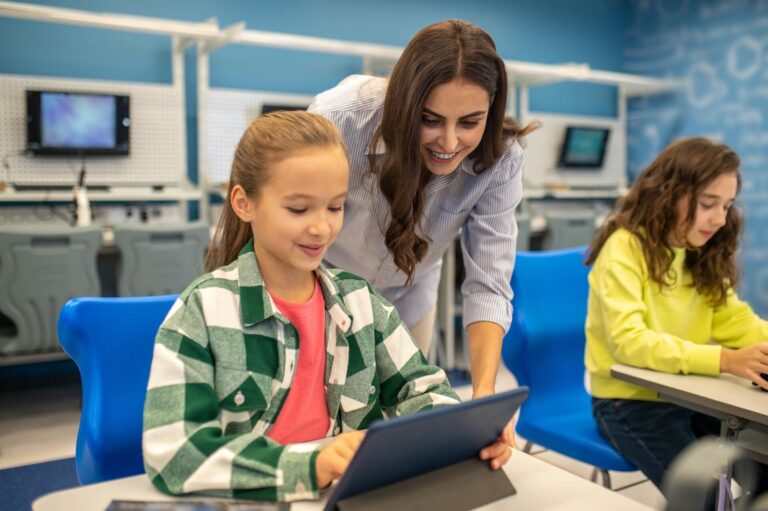In today’s fast-paced world, the role of educators has evolved significantly. Harnessing Technology With the integration of technology into education, educators have a plethora of modern tools at their disposal to enhance the learning experience for students. From interactive platforms to digital resources, technology has opened up new avenues for effective teaching and learning. In this article, we will explore the various ways educators can harness technology to create engaging and impactful learning environments.
Embracing Interactive Learning Platforms
One of the key ways educators can leverage technology is through interactive learning platforms. These platforms offer a dynamic and engaging learning experience that goes beyond traditional classroom settings. With features like virtual classrooms, real-time collaboration, and multimedia integration, educators can create a more immersive learning environment that caters to different learning styles.

Utilizing Digital Resources and E-Libraries
Gone are the days of heavy textbooks and photocopied handouts. Digital resources and e-libraries have revolutionized the way educators provide learning materials to students. Online libraries give educators access to a vast collection of resources, from e-books and research papers to educational videos and interactive simulations. This not only saves time and resources but also allows educators to provide up-to-date and relevant content to their students.
Personalized Learning Journeys
Technology has paved the way for personalized learning experiences. Adaptive learning platforms use data analytics to understand each student’s learning pace and style. Educators can tailor their lessons to match the individual needs of students, ensuring that no one is left behind. This approach not only enhances understanding but also boosts student confidence and motivation.
Gamification for Enhanced Engagement
Gamification is another innovative approach that technology brings to education. By incorporating game elements into lessons, educators can make learning more engaging and fun. Gamified quizzes, interactive challenges, and reward systems can motivate students to actively participate in their learning journey while improving their retention of the material.
Virtual Reality (VR) and Augmented Reality (AR)
Imagine taking students on a virtual field trip to historical sites or allowing them to explore the human body in 3D. Virtual Reality (VR) and Augmented Reality (AR) are powerful tools that enable educators to create immersive and memorable learning experiences. These technologies can transport students beyond the confines of the classroom, making learning more vivid and experiential.
Collaboration Beyond Borders
Technology transcends geographical boundaries and allows educators and students to collaborate on a global scale. Video conferencing, online discussion boards, and collaborative platforms enable educators to connect their students with peers from around the world. This not only exposes students to diverse perspectives but also enhances their cross-cultural communication skills.
Data-Driven Decision Making
Harnessing technology provides educators with valuable insights into student performance. Learning management systems and data analytics tools allow educators to track student progress, identify areas of improvement, and adjust their teaching strategies accordingly. This data-driven approach ensures that educators can continuously refine their methods for optimal results.
Overcoming Accessibility Barriers
Technology has the potential to make education more accessible to all. For students with disabilities, assistive technologies such as screen readers, speech-to-text software, and tactile graphics can level the playing field and provide an inclusive learning environment.
Fostering Creativity and Innovation
With technology, educators can encourage creativity and innovation among students. Digital storytelling, multimedia presentations, and collaborative projects challenge students to think outside the box and express themselves in new and imaginative ways.
Preparing Students for the Digital Age
Incorporating technology into education is not only about enhancing teaching methods but also about preparing students for the digital age. By exposing them to a variety of technological tools and platforms, educators equip students with essential digital literacy skills that are vital in today’s workforce.
Conclusion
As technology continues to evolve, educators have an unprecedented opportunity to harness its power for the benefit of their students. Harnessing Technology The modern tools discussed in this article are just the tip of the iceberg. By embracing these tools and staying open to further innovations, educators can create dynamic and effective learning experiences that empower students for success in the digital era. Through interactive learning platforms, digital resources, personalized approaches, and more, technology is truly revolutionizing education and paving the way for a brighter future.

